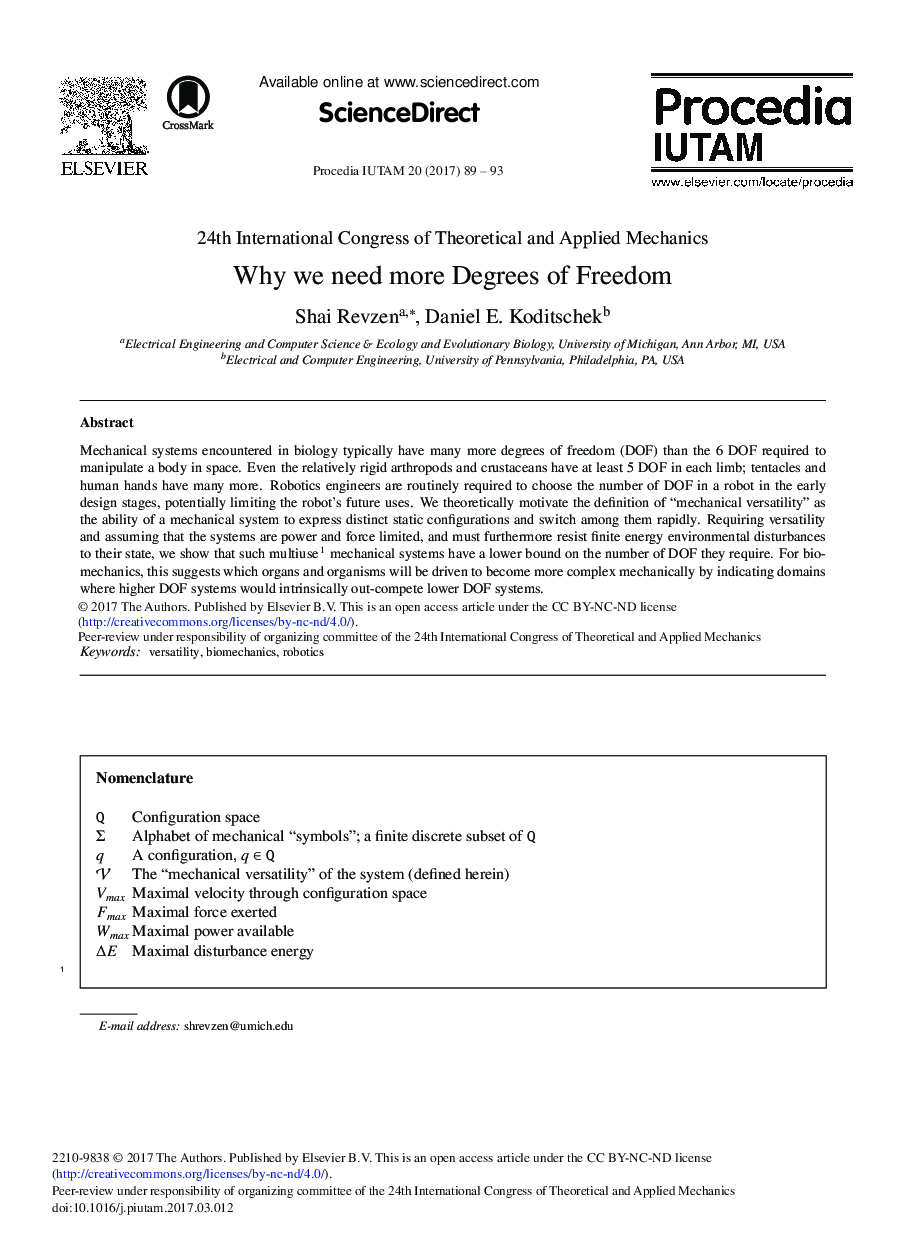| Article ID | Journal | Published Year | Pages | File Type |
|---|---|---|---|---|
| 5030588 | Procedia IUTAM | 2017 | 5 Pages |
Mechanical systems encountered in biology typically have many more degrees of freedom (DOF) than the 6 DOF required to manipulate a body in space. Even the relatively rigid arthropods and crustaceans have at least 5 DOF in each limb; tentacles and human hands have many more. Robotics engineers are routinely required to choose the number of DOF in a robot in the early design stages, potentially limiting the robot's future uses. We theoretically motivate the definition of “mechanical versatility” as the ability of a mechanical system to express distinct static configurations and switch among them rapidly. Requiring versatility and assuming that the systems are power and force limited, and must furthermore resist finite energy environmental disturbances to their state, we show that such multiuse 1 mechanical systems have a lower bound on the number of DOF they require. For bio-mechanics, this suggests which organs and organisms will be driven to become more complex mechanically by indicating domains where higher DOF systems would intrinsically out-compete lower DOF systems.
